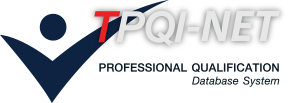หน่วยสมรรถนะ
Inspect aircraft electrical systems and components.
สาขาวิชาชีพการบิน
รายละเอียดหน่วยสมรรถนะ
| 1. รหัสหน่วยสมรรถนะ | AVT-FTN-4-073ZA |
| 2. ชื่อหน่วยสมรรถนะ | Inspect aircraft electrical systems and components. |
| 3. ทบทวนครั้งที่ | - / - |
| 4. สร้างใหม่ |
|
ปรับปรุง |
|
| 5. สำหรับชื่ออาชีพและรหัสอาชีพ (Occupational Classification) | |
|
|
|
| 6. คำอธิบายหน่วยสมรรถนะ (Description of Unit of Competency) | |
| This unit of competency applies hand skills and employs system/component knowledge and applicable maintenance publications in the inspection of aircraft electrical systems and components of fixed and rotary wing aircraft during scheduled or unscheduled maintenance. This work may be carried individually or as part of a team. | |
| 7. สำหรับระดับคุณวุฒิ |
| 1 | 2 | 3 | 4 | 5 | 6 | 7 | 8 |
|---|---|---|---|---|---|---|---|
| 8. กลุ่มอาชีพ (Sector) | |
| 10 Aircraft Mechanics | |
| 9. ชื่ออาชีพและรหัสอาชีพอื่นที่หน่วยสมรรถนะนี้สามารถใช้ได้ (ถ้ามี) | |
| N/A | |
| 10. ข้อกำหนดหรือกฎระเบียบที่เกี่ยวข้อง (Licensing or Regulation Related) (ถ้ามี) | |
| ICAO Doc 7192 / EASA Part 66 | |
| 11. สมรรถนะย่อยและเกณฑ์การปฏิบัติงาน (Elements and Performance Criteria) |
| หน่วยสมรรถนะย่อย (EOC) | เกณฑ์ในการปฏิบัติงาน (Performance Criteria) | รหัส PC (ตามเล่มมาตรฐาน) |
รหัส PC (จากระบบ) |
|---|---|---|---|
| 103402.01 Inspect electrical systems and components. | 103402.01.01 Isolation tags are checked and aircraft configured forsafe system inspection and operation according to the applicable maintenancemanual. | 103402.01.01 | 71260 |
| 103402.01 Inspect electrical systems and components. | 103402.01.02 Electrical systemcomponents are visually or physically checked for external signs of defectsaccording to applicable maintenance manual while noticing all relevant workhealth and safety (WHS) requirements. Defects are correctly identified and recorded according tostandard enterprise procedures. | 103402.01.02 | 71261 |
| 103402.02 Inspect electrical components. | 103402.02.01 Isolation tags are checked and aircraft configured forsafe system inspection and operation according to the applicable maintenancemanual. | 103402.02.01 | 71262 |
| 103402.02 Inspect electrical components. | 103402.02.02 Electrical hardwareare visually or physically checked for external signs of defects according toapplicable maintenance manual while noticing all relevant work health andsafety (WHS) requirements. Defects are correctly identified and recorded according tostandard enterprise procedures. | 103402.02.02 | 71263 |
| 12. ความรู้และทักษะก่อนหน้าที่จำเป็น (Pre-requisite Skill & Knowledge) | |
|
|
|
| 13. ทักษะและความรู้ที่ต้องการ (Required Skills and Knowledge) | |
|
(ก) ความต้องการด้านทักษะ
(ข) ความต้องการด้านความรู้
|
|
| 14. หลักฐานที่ต้องการ (Evidence Guide) | |
|
|
|
| 15. ขอบเขต (Range Statement) | |
|
Electrical systems and components include: • Alternating current (AC) and/or direct current (DC) • power generation, regulation and distribution systems • Battery installations and bus ties/interlocks • Rotary and static inverters and transformer rectifier (TR) • units • Air cycle air conditioning and pressurisation systems • Flight and engine control systems • Ignition and starting systems • Fire/smoke detection and extinguishing • Lighting • Master and caution warning systems • Equipment and furnishing • Equipment cooling and ventilation • Position indicating systems • Fuel storage and distribution • Propeller control systems (where applicable to the enterprise) • Landing gear indication and anti-skid (where applicable to the enterprise) • Ice and rain protection (where applicable to the enterprise) • Wastewater (where applicable to the enterprise) Procedures and requirements include • Industry standard procedures specified by manufacturers, regulatory authorities or the enterprise |
|
| 16. หน่วยสมรรถนะร่วม (ถ้ามี) | |
| N/A | |
| 17. อุตสาหกรรมร่วม/กลุ่มอาชีพร่วม (ถ้ามี) | |
| N/A | |
| 18. รายละเอียดกระบวนการและวิธีการประเมิน (Assessment Description and Procedure) | |
|
This shall be proven via the records in the Log of Industrial Experience and Achievement or, where appropriate, an equivalent Industry Evidence Guide. |
|
